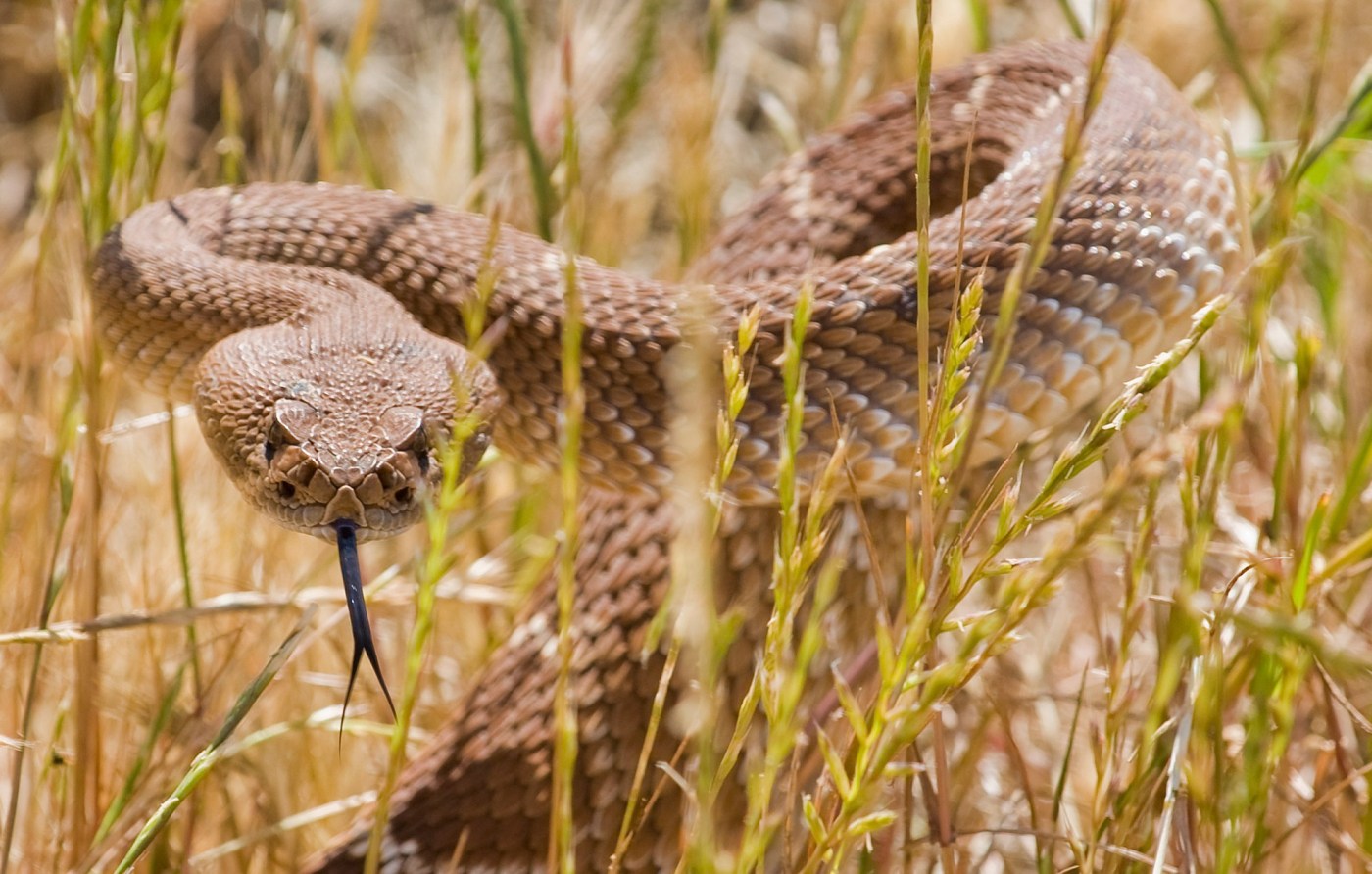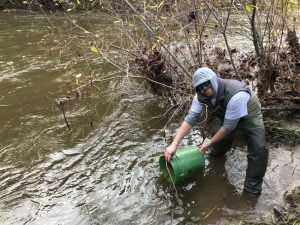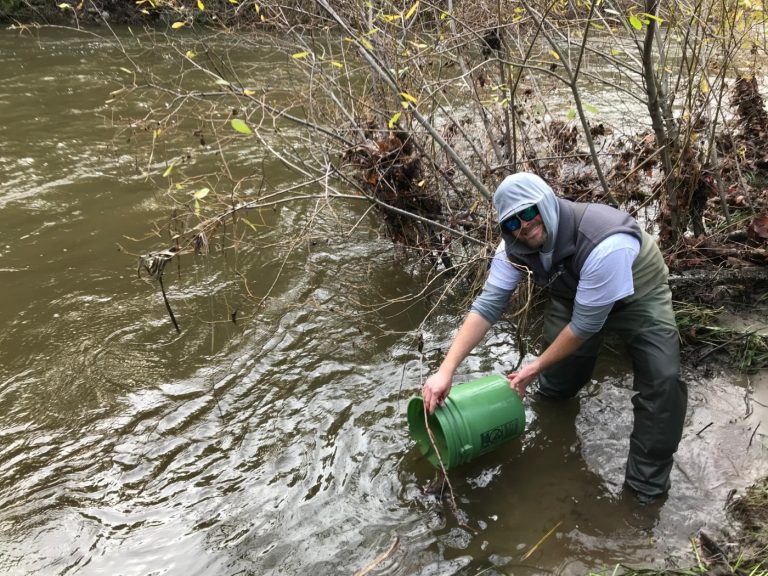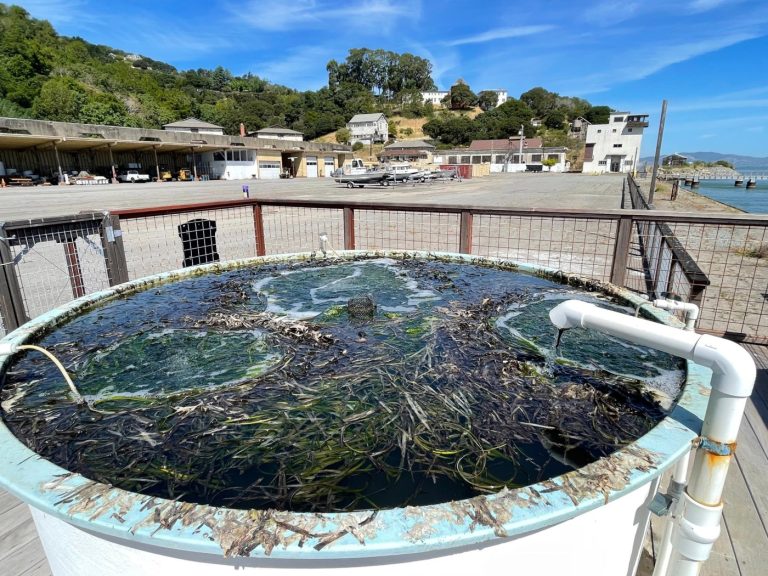In California, rattlesnakes bite about 800 people in a typical year; approximately two are fatal in a year. The threat usually begins in April and will decrease by September.
Rattlesnakes are not confined to rural areas. They have been found near urban areas, rivers, lakes and golf courses. Rattlesnakes do not always rattle before striking defensively.
Related Articles
Northern California dog owners warned by state wildlife officials to keep their canines away from raw fish
Giving a hoot: How to protect owls in your backyard
Remnants of bird flu virus found in pasteurized milk, FDA says
Plan to kill Catalina deer using sharpshooters in copters attracts opposition
Dead gray whale washes up on East Bay beach
Safety tips from the California Department of Fish and Wildlife:
Never go barefoot or wear sandals when walking through wild areas.
When hiking, stick to trails and wear boots and long pants. Avoid tall grass, weeds and heavy underbrush where snakes may hide during the day.
Do not step or put your hands where you cannot see, and avoid wandering around in the dark. Step on logs and rocks, never over them, and be especially careful when climbing rocks or gathering firewood. Check out stumps or logs before sitting down, and shake out sleeping bags before use.
Be careful when stepping over the doorstep as well. Snakes like to crawl along the edges of buildings, where they are protected on one side.
Never hike alone. Always have someone with you who can assist in an emergency.
Do not handle a freshly killed snake; it can still inject venom.
Teach children early to respect snakes and leave them alone. Children are naturally curious and will pick up snakes.
The California Fish and Wildlife Department has tips on rattlesnake exclusion methods and what to do if you see one on your property here.
If bitten
Stay calm, get safely away from the snake and have someone call 911 (or the emergency number in your area).
Have the victim lie down with the affected limb lower than the heart. Keep the limb immobilized. If practical, splint the limb.
Treat for shock and preserve body heat.
Remove any rings, bracelets, boots or other restricting items from the bitten extremity. (It will swell.)
Apply a light, constricting band about 2 inches above and below the bite, but never place the bands on either side of a joint (such as above and below the knee or elbow). This band should be made up of wide, soft material, such as a handkerchief or shredded clothing.
Wash the bite with soap and water (if available).
If the victim has to walk out, proceed calmly to the nearest source of help. Call Poison Control Center at 800-222-1222.
Here’s what not to do
Do not apply ice or heat to the bite site.
Do not suck out venom (poison).
Do not cut or slice around the bite site.
Do not use a tourniquet to restrict blood flow.
Do not take medicines or consume alcohol/caffeinated drinks.
There are 24 different species of rattlesnakes in the world. Seven different types live in California (listed in the chart to the right) and two of these species consist of more than one subspecies.
Occurring worldwide, this family of dangerously venomous snakes includes about 290 species. Seventeen of the 19 venomous snakes in the United States belong to the Viperidae. They are represented by three genera: Agkistrodon, the copperheads and cottonmouths, as well as Crotalus and Sistrurus, the rattlesnakes.
There are only 17 species of Vipers in the U.S.
You can find range maps of all California snakes here.
Sources: Southwest Biological Science Center; National Park Service; American International Rattlesnake Museum; California Department of Fish and Wildlife; CaliforniaHerps.com, California Poison Control Board
Photos: Staff file photos; Edwards Air Force Base; Wikimedia commons; National Park Service; The Associated Press; U.S. Fish and Wildlife Service; Gary Nafis, CaliforniaHerps.com












